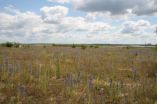(Press-News.org) Personality is not just a feature unique to humans and pets. Scientists at the University of Gothenburg (Sweden) have revealed that also brown trout have individual characters and show different personalities.
Researcher Bart Adriaenssens from the Department of Zoology at the University of Gothenburg has for many years studied the behaviour of juvenile trout from watercourses on the west coast of Sweden.
"My results show that it are not just humans and other mammals that exhibit personality. Also brown trout differ among each other in their level of aggression and react differently to changes in their surroundings", says Bart Adriaenssens. "The release of a novel object in the aquarium causes very different reactions. Some individuals will immediately explore this object, whereas others will rather hide in a corner and try to avoid every contact."
"But it are not always the bold and aggressive fish who are most successful. When we marked trout individually and released them back in the wild, it were shy trout who grew most rapidly."
Which fish personality works best may also depend on the environment: if there is little protection available, as is the case, for example, in a tank at an aquaculture facility, large and bold fish are likely able to grab most of the food. But in the more complex environment of a stream in the wild, shy individuals can be more successful.
The question of why animals have personalities remains still to be answered.
"If a certain personality proves to work well, and individuals with that personality grow rapidly, survive in greater numbers and have more offspring, we would expect all individuals to behave according to that personality. This is not the case, however, and there is still a lot of work to be done in this area to explain why", says Bart Adriaenssens.
INFORMATION:
The thesis has been successfully defended.
Shy trout size it up
2010-12-07
ELSE PRESS RELEASES FROM THIS DATE:
2 studies provide insight into stroke risk and prevention in young sickle cell anemia patients
2010-12-07
Monthly blood transfusions combined with daily medication to remove the resulting excess iron remains the best approach for reducing the risk of recurrent strokes in young patients with sickle cell anemia, according to a preliminary analysis of a multicenter trial that includes St. Jude Children's Research Hospital.
The study compared the efficacy of two treatments for the potentially life-threatening problem of iron overload caused by chronic transfusion therapy. The transfusions are used to guard against additional strokes in young sickle cell anemia patients. The trial, ...
New tool in the early detection of bowel disease
2010-12-07
An international team of researchers led by the University of East Anglia (UEA) have developed a new kind of endoscope to aid the early detection and diagnosis of inflammatory bowel disease.
The Confocal Laser Endomicroscope (CLE) contains a powerful microscope which allows clinicians to view the bacteria that are thought to trigger diseases of the bowel such as Crohn's disease and ulcerative colitis.
"Bacteria within the wall of the gut are already believed to play an important role in the development of inflammatory bowel disease and we now have a powerful new tool ...
Researchers discover a way to delay Christmas tree needle loss
2010-12-07
Quebec City, December 6, 2010—Researchers at Université Laval, in collaboration with Nova Scotia Agricultural College, have discovered what causes Christmas tree needles to drop off, and how to double the lifespan of Christmas trees in homes. The authors presented their findings in a recent issue of the scientific journal Trees.
The researchers have identified a plant hormone—ethylene—responsible for needle loss in balsam fir. They made the discovery by placing fir branches in containers of water inside a growth chamber. After ten days the branches began to produce ethylene ...
Brand recognition can help hotels survive economic downturns
2010-12-07
Brand named hotels fare better than independently operated properties in economic downturns, according to a team of international researchers.
A study of the performance of hotels during both economic recessions and expansions indicates that brand named hotels are more profitable than independent hotels under all economic conditions, but the difference is particularly significant during recessions, said John O'Neill, associate professor of hospitality management, Penn State.
"There has been a lot of debate in the hotel industry about the advantages of brand affiliation ...
Study reveals how taking an active role in learning enhances memory
2010-12-07
CHAMPAIGN, Ill. — Good news for control freaks! New research confirms that having some authority over how one takes in new information significantly enhances one's ability to remember it. The study, in the journal Nature Neuroscience, also offers a first look at the network of brain structures that contribute to this phenomenon.
"Having active control over a learning situation is very powerful and we're beginning to understand why," said University of Illinois psychology and Beckman Institute professor Neal Cohen, who led the study with postdoctoral researcher Joel Voss. ...
AgriLife researchers find way to cut food-irradiation levels by half
2010-12-07
COLLEGE STATION — A team of Texas AgriLife Research engineers has developed a way to cut by as much as half the amount of irradiation needed to kill 99.999 percent of salmonella, E. coli and other pathogens on fresh produce.
By packing produce in a Mylar bag filled with pure oxygen, Dr. Carmen Gomes, AgriLife Research food safety engineer, and her colleagues found they could significantly reduce the amount of radiation needed to kill those pathogens. Reducing the amount of radiation is not so much a safety measure as it is a way to preserve quality of the produce, she ...
Report finds K-12 computer science education declining
2010-12-07
PITTSBURGH—Computer-related technology is increasingly driving the U.S. economy, yet computer science education is scant in most American elementary and secondary school classrooms and the number of introductory and Advanced Placement courses in computer science has actually declined in the last five years, according to a report released this fall.
"Some states and some schools are offering some really excellent courses," said Mark Stehlik, co-author of the report, "Running on Empty: The Failure to Teach K-12 Computer Science in the Digital Age," http://www.acm.org/runningonempty/. ...
Fledgling ecosystem at Chicken Creek lets scientists observe how soil, flora and fauna develop
2010-12-07
How do ecosystems develop? No one really knows, yet. There is however one project, unique in the world, seeking to answer this question. In a former open-pit coal mining area in Brandenburg, Germany, a surface of six hectares was partitioned off and then left to its own resources. Scientists from the Technische Universitaet Muenchen (TUM), in collaboration with researchers from other institutions, are studying the development of soil, flora, and fauna there. With this research they aim to establish the factors that have a particularly strong influence on developing ecosystems.
Young ...
Drug prevents post-traumatic stress syndrome
2010-12-07
CHICAGO --- Post-traumatic stress syndrome – when a severely stressful event triggers exaggerated and chronic fear – affects nearly 8 million people in the United States and is hard to treat. In a preclinical study, Northwestern Medicine scientists have for the first time identified the molecular cause of the debilitating condition and prevented it from occurring by injecting calming drugs into the brain within five hours of a traumatic event.
Northwestern researchers discovered the brain becomes overly stimulated after a traumatic event causes an ongoing, frenzied ...
Pure nanotube-type growth edges toward the possible
2010-12-07
New research at Rice University could ultimately show scientists the way to make batches of nanotubes of a single type.
A paper in the online journal Physical Review Letters unveils an elegant formula by Rice University physicist Boris Yakobson and his colleagues that defines the energy of a piece of graphene cut at any angle.
Yakobson, a professor in mechanical engineering and materials science and of chemistry, said this alone is significant because the way graphene handles energy depends upon the angle -- or chirality -- of its edge, and solving that process for ...



